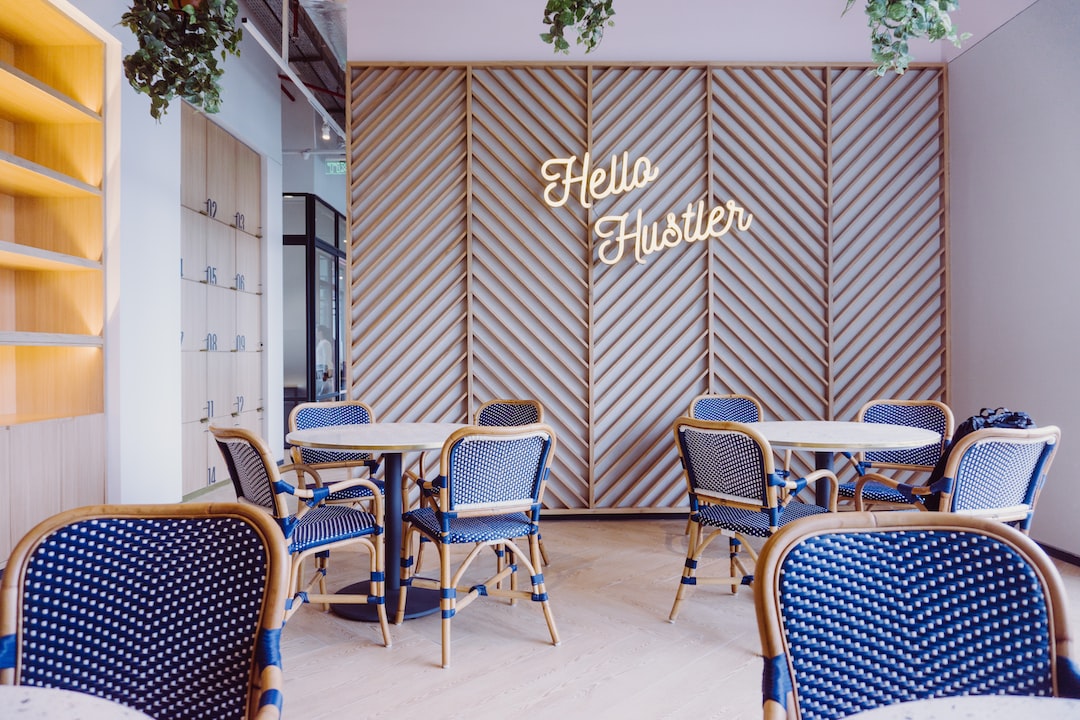In the world of content creation, inspiration and motivation are essential ingredients for success. Whether you’re a writer, a photographer, a videographer, or any other type of content creator, finding the drive to create high-quality work can sometimes be a challenge. However, when you tap into your inspiration and motivation, the results can be truly remarkable.
Key Takeaways
- Inspiration and motivation are crucial for successful content creation.
- Techniques for staying inspired include taking breaks, trying new things, and seeking out inspiration from others.
- Strategies for boosting motivation include setting achievable goals, breaking tasks into smaller steps, and rewarding yourself for progress.
- Collaboration with others can provide fresh perspectives and keep you motivated.
- Personal interests can be a powerful source of inspiration for content creation.
Understanding the Importance of Inspiration and Motivation in Content Creation
Inspiration and motivation are crucial for creating quality content because they fuel your creativity and drive you to produce your best work. When you’re inspired, ideas flow more freely, and you’re able to think outside the box. Motivation, on the other hand, provides the energy and determination to see a project through to completion.
On the flip side, a lack of inspiration and motivation can have a significant impact on your content creation efforts. Without inspiration, you may find yourself struggling to come up with fresh ideas or feeling stuck in a creative rut. Without motivation, it’s easy to procrastinate or give up on projects altogether.
Finding Your Creative Spark: Tips and Techniques for Staying Inspired
Finding inspiration for content creation can come from a variety of sources. One way is to expose yourself to different forms of art and media. Visit art galleries, watch movies, read books, listen to music – all of these experiences can spark new ideas and perspectives.
Another technique for staying inspired is to keep a journal or notebook where you can jot down ideas as they come to you. This way, you’ll have a bank of inspiration to draw from when you’re feeling stuck.
Additionally, taking breaks and allowing yourself time for relaxation and self-care can also help reignite your creative spark. Sometimes stepping away from your work for a while can give your mind the space it needs to generate new ideas.
Overcoming Creative Blocks: Strategies for Boosting Motivation
| Strategy | Description | Effectiveness |
|---|---|---|
| Brainstorming | Generating ideas without judgment or criticism | High |
| Mind Mapping | Visualizing ideas and connections | High |
| Collaboration | Working with others to generate ideas | High |
| Take a Break | Stepping away from the project to gain perspective | High |
| Change of Environment | Moving to a new location to stimulate creativity | Medium |
| Exercise | Physical activity to boost energy and creativity | Medium |
| Limit Distractions | Minimizing interruptions and distractions | Medium |
| Set Goals | Establishing clear objectives and deadlines | Low |
| Positive Self-Talk | Encouraging and motivating oneself | Low |
Creative blocks are common in content creation, but they don’t have to be permanent roadblocks. There are several strategies you can employ to boost your motivation and overcome these blocks.
One effective strategy is to break your project down into smaller, more manageable tasks. By focusing on one small task at a time, you can build momentum and gradually work your way through the project.
Another strategy is to change up your environment. Sometimes a change of scenery can do wonders for your motivation. Try working in a different location, rearranging your workspace, or even taking your work outside.
Additionally, seeking feedback and support from others can also help boost your motivation. Share your work with trusted friends or colleagues and ask for their input. Their encouragement and constructive criticism can provide the motivation you need to keep going.
The Power of Collaboration: Working with Others to Stay Inspired
Collaboration is a powerful tool for staying inspired in content creation. When you work with others, you have the opportunity to bounce ideas off each other, learn from different perspectives, and push each other to create better work.
One way to collaborate is to join a creative community or network. This could be an online forum, a local meetup group, or even a coworking space. Surrounding yourself with like-minded individuals who share your passion for content creation can be incredibly inspiring and motivating.
Another way to collaborate is to partner with other content creators on joint projects. This could involve co-writing an article, creating a podcast together, or collaborating on a video series. By combining your skills and expertise, you can create something truly unique and inspiring.
Tapping into Your Passion: Using Personal Interests to Fuel Content Creation

One of the most effective ways to stay inspired and motivated in content creation is to tap into your personal interests and passions. When you create content about topics that genuinely excite you, it’s much easier to stay motivated and produce high-quality work.
Think about the things that you’re truly passionate about – whether it’s a hobby, a cause, or a particular subject matter. Find ways to incorporate these interests into your content creation. This could involve writing articles, creating videos, or taking photographs that align with your passions.
Not only will this fuel your motivation, but it will also make your work more authentic and engaging. When you’re genuinely passionate about what you’re creating, it shines through in the final product.
Setting Goals and Deadlines: Creating a Roadmap for Motivation
Setting goals and deadlines is essential for staying motivated in content creation. Without clear objectives, it’s easy to lose focus and become overwhelmed by the sheer volume of work.
Start by setting long-term goals for your content creation. What do you hope to achieve in the next year? The next five years? Having a clear vision of where you want to go can provide the motivation you need to keep pushing forward.
Once you have your long-term goals in place, break them down into smaller, more manageable milestones. Set deadlines for each milestone and hold yourself accountable to meet them. This will help you stay on track and maintain a sense of progress.
It’s important to remember that goals and deadlines should be realistic and achievable. Setting unrealistic expectations can lead to burnout and demotivation. Be kind to yourself and set goals that are challenging but attainable.
The Role of Mindfulness and Self-Care in Content Creation
Mindfulness and self-care play a crucial role in maintaining inspiration and motivation in content creation. When you take care of your mental and physical well-being, you’re better equipped to tap into your creativity and produce quality work.
Practicing mindfulness involves being fully present in the moment and paying attention to your thoughts, feelings, and sensations without judgment. This can help reduce stress, increase focus, and enhance creativity.
Incorporating self-care into your routine is also essential. This could involve activities such as exercise, meditation, spending time in nature, or engaging in hobbies that bring you joy. Taking care of yourself allows you to recharge and replenish your creative energy.
Staying Organized: Tools and Strategies for Streamlining the Creative Process
Organization is key to maintaining inspiration and motivation in content creation. When you’re organized, you can easily access your resources, stay on top of deadlines, and minimize distractions.
There are several tools and strategies you can use to stay organized during the creative process. Project management software, such as Trello or Asana, can help you keep track of tasks and deadlines. Cloud storage services, like Google Drive or Dropbox, can ensure that your files are easily accessible from anywhere.
Creating a schedule or a content calendar can also help you stay organized. This allows you to plan ahead, allocate time for different tasks, and ensure that you’re consistently producing content.
Eliminating distractions is another important aspect of staying organized. Turn off notifications on your phone or computer, create a dedicated workspace free from clutter, and establish boundaries with friends and family to minimize interruptions.
Embracing Failure: Learning from Setbacks and Moving Forward
Failure is an inevitable part of the creative process, but it’s also an opportunity for growth and learning. Instead of viewing failure as a setback, embrace it as a chance to improve and refine your work.
When you encounter failure or setbacks in content creation, take the time to reflect on what went wrong and why. Was it a lack of preparation? Did you take on too much at once? By understanding the root causes of failure, you can make adjustments and avoid making the same mistakes in the future.
It’s important to remember that failure is not a reflection of your worth or talent as a content creator. Every successful creator has faced failures along the way – it’s how they respond to those failures that sets them apart.
Celebrating Success: Recognizing Achievements and Staying Inspired for the Future
Celebrating success is just as important as learning from failure. When you recognize and acknowledge your achievements, it boosts your motivation and inspires you to continue creating.
Take the time to celebrate both big and small wins in your content creation journey. This could involve treating yourself to something special, sharing your success with friends and family, or simply taking a moment to reflect on how far you’ve come.
Additionally, surround yourself with a supportive community that celebrates your successes with you. Share your achievements on social media, join online groups or forums where you can connect with other content creators, and seek out mentors who can provide guidance and encouragement.
In conclusion, inspiration and motivation are vital components of successful content creation. By understanding the importance of these factors and implementing strategies to stay inspired and motivated, you can produce high-quality work that resonates with your audience. Remember to tap into your passions, set achievable goals, practice self-care, stay organized, embrace failure, and celebrate your successes along the way. With these tools in your arsenal, you’ll be well-equipped to navigate the challenges of content creation and continue to create meaningful and impactful work.
FAQs
What is content creation?
Content creation is the process of generating ideas, planning, researching, writing, designing, and publishing content such as articles, blog posts, videos, podcasts, and social media posts.
Why is staying inspired and motivated important in content creation?
Staying inspired and motivated is important in content creation because it helps you produce high-quality content consistently, meet deadlines, and engage your audience. It also helps you avoid burnout and writer’s block.
What are some tips for staying inspired and motivated in content creation?
Some tips for staying inspired and motivated in content creation include setting goals, creating a content calendar, taking breaks, collaborating with others, seeking feedback, and experimenting with new formats and topics.
How can I generate ideas for content creation?
You can generate ideas for content creation by brainstorming, researching your audience’s interests and needs, analyzing your competitors’ content, using social media listening tools, and repurposing old content.
What are some common challenges in content creation?
Some common challenges in content creation include writer’s block, lack of inspiration, time constraints, limited resources, and difficulty in measuring the effectiveness of your content.
How can I measure the effectiveness of my content?
You can measure the effectiveness of your content by tracking metrics such as website traffic, engagement rates, social media shares, email open rates, and conversion rates. You can also use tools such as Google Analytics and social media analytics to analyze your data.










